Using a digital camera to 'scan' a slide
This is the first part of the process of using a digital camera to "scan" slides.
What kind of camera is suitable for camera scanning?
I have had the best luck using a DSLR camera. I use a macro lens, because macro lenses are designed to focus on a flat field. Normal camera lenses often have a curved plane of focus, which isn't good when you are trying to focus on a flat piece of film. A frame of 35mm film is small. Normal camera lenses usually can't fill the frame when pointed at a frame of 35mm film. Macro lenses are designed to get real close to things.
I use a Canon 60D DSLR and a Canon 60mm macro lens. I use a Photosolve Extend-a-Slide to hold the slide or negative in front of the macro lens. I use a customized version of the Extend-a-Slide negative carrier.
I use four daylight balanced CFLs that have a CRI (Color Rendering Index) of 93, mounted in a softbox. I use this 4-way adapter to mount the CFLs. I add two stops of additional diffusion by suspending two layers of Rosco #3026 diffusion filter in front of the film.
I use liveview mode (image displays on the LCD screen). I magnify 5x and use manual focus and focus on detail in the image (film grain is usually too fine in slides to focus on.) In order to alleviate out of focus areas caused by warped film, I move the liveview focus point to the portion of the image that is most important. i.e., a face. I use manual mode on the camera and set the aperture to f/8 (f/11 on a full frame camera.) I use the camera's lowest ISO and use a remote shutter release.
I use RAW mode and stay in 16 bit mode, but this isn't as important with slides as it is with negatives. You can probably use JPEG mode and won't be losing much. For slides. For negatives, always use RAW and work in 16 bit mode. I use RAW and work in 16 bits with slides because bits are a terrible thing to waste. If the camera generates the data I don't want to throw it away until I absolutly have to.
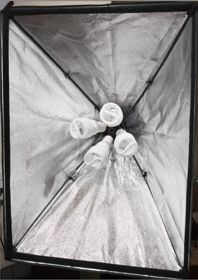
CFLs in softbox
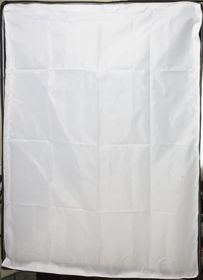
Diffusing panel on front of softbox
Make sure that the CFLs are daylight balanced and have a CRI rating that is over 90. If the CFL package doesn't say anything about CRI, it probably is too low to be useful.
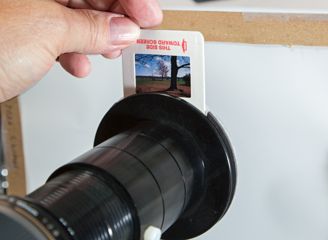
Extend-a-Slide and slide. Emulsion side facing camera
Rosco #3026 diffusing filter in front of the Extend-a-Slide
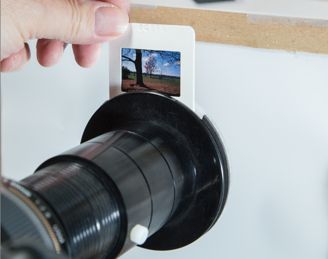
Extend-a-Slide and slide
Emulsion side facing away from camera
You can put the slide in with the emulsion facing the camera, or with the emulsion facing away from the camera. If the emulsion faces the camera, the camera won't have to look through the clear base of the slide, so the focus might be sharper. The downside of having the emulsion facing the camera is that the image will be reversed when you get it into an editing program, so you will have to flip it. If the emulsion faces away from the camera, it won't be reversed and you won't have to flip it in your editing program.
It is a good idea to have Pec-12 Emulsion Cleaner and Pec*Pad Photowipes on hand. A Rocket Blower is useful to blow dust off of slides. A Kinetronics anti-static brush can remove dust that the Rocket blower won't remove.
Canned air can be useful to blow dust off your work area (and the slide carrier) But be careful using canned air on negatives because sometimes canned air spews semi-caustic fluid that probably isn't good to get on your negatives.
Set the camera's white balance to "Daylight." Set the camera to manual exposure. Set aperture to f/8 (f/11 on a full frame camera), and ISO to 100. Adjust the shutter speed to set the exposure to so that none of the Red, Green, or Blue channels are overexposed. Use a remote shutter release.
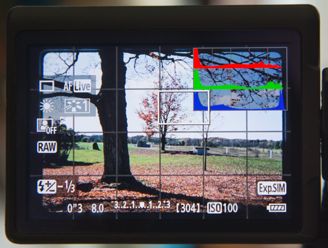
Adjust exposure to just barely overexpose the red channel
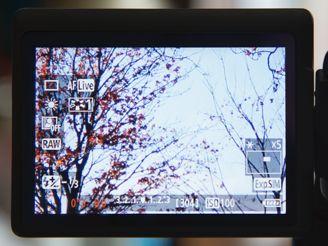
Zoom to 5x and manually focus on detail in the image
Move the focus point to the most important part of the image. In case the slide is warped enough to make it impossible to focus on the entire image, if you focus on the most important part (like a face), maybe you won't notice the part that is out of focus.
Questions? Write to camerascanning@frogymandias.org